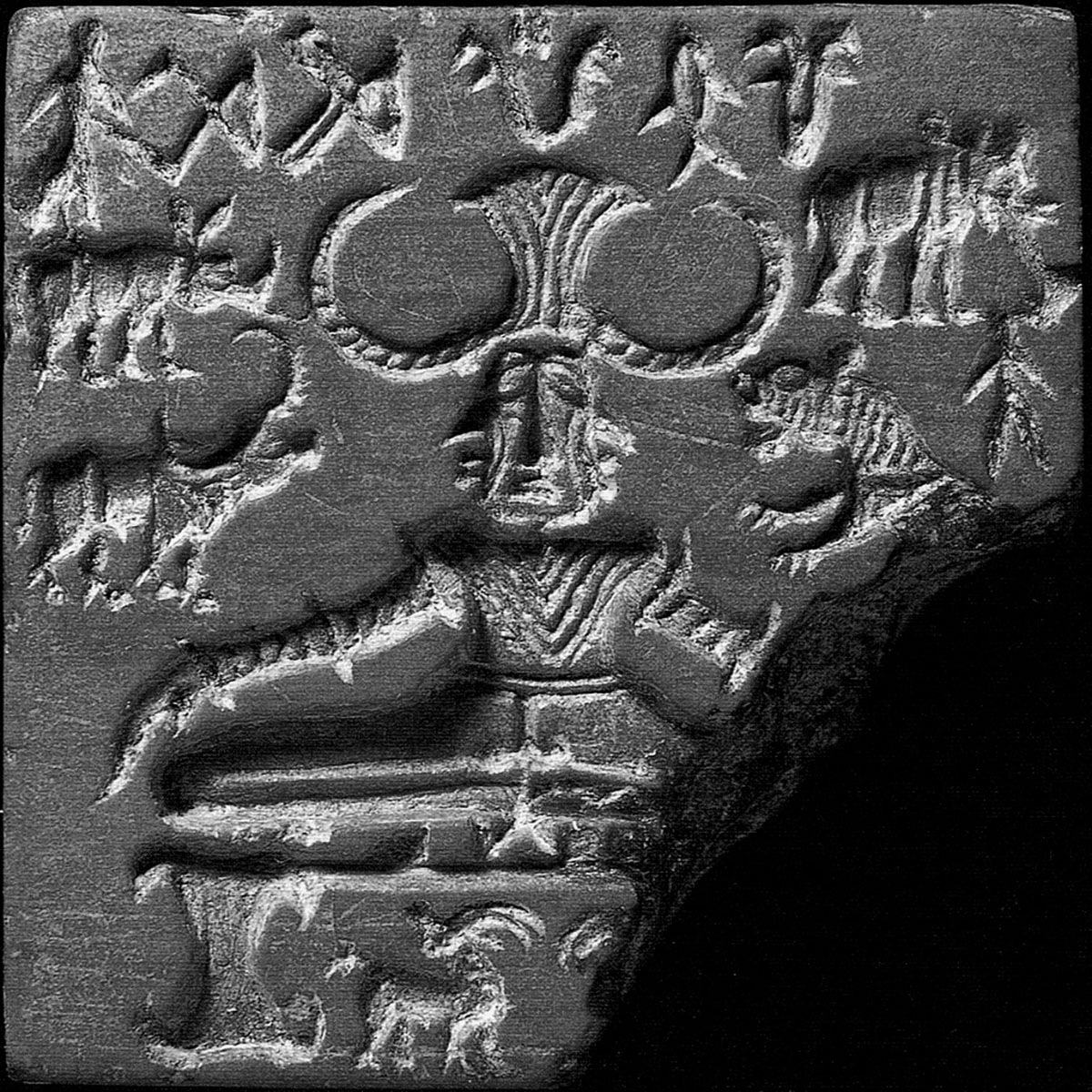A well-known stamp seal from the Indus Valley, the Pashupati seal is carved in steatite and gets its name from the Sanskrit word for “lord of all animals,” referring to the Hindu deity Shiva. One of the earliest of the few similarly illustrated seals and tablets from the region, it is dated to around 2500–2400 BCE of the Mature Harappan Phase of the Indus Valley Civilisation and was excavated from the Mohenjo-daro archaeological site in the Sindh province of present-day Pakistan. Also designated as Seal No. 420 or the proto-Shiva seal for its evocation of the eponymous deity, it is 3.56 centimetres high, 3.53 centimetres long and 0.76 centimetres wide.
The defining aspect of the pashupati seal, and the subject of much interpretive debate, is its iconography. The central figure is seated on a dias in a meditative pose resembling the yogic padmasana. The figure’s arms are covered in what appear to be bangles and the torso features a series of striations that may represent multiple necklaces or triangular pectorals. While the waist is adorned with a double-banded sash ending in hanging tassels, the lower body appears bare. The headdress, the most noticeable element, consists of two long, curved horns, pointing upwards and inwards to a fan-shaped central component. The face bears distinctive features as well — narrow, high-set, downward slanting eyes; a prominent, elongated nose; and a downturned mouth. On either side of the head are lateral projections that have been interpreted as having various meanings. Below the dias stand two creatures, believed to be deer facing each other with curved, downward-pointing antlers, and surrounding the figure are other animals, including a tiger, a buffalo, a rhinoceros and an elephant. This seal, like many others recovered from the region, has inscriptions in the Indus Valley script along its top edge.
While the identity of the figure has been the subject of much debate, there is a consensus on its supposed associations with the divine. The earliest and most influential, as well as disputed, theory was advanced by British archaeologist John Marshall who was the first to document the seal. The interpretation of the main figure as pashupati emerged from his understanding of medieval iconography of Shiva — the trishula shape of the headdress, the yogic pose, the encircling of the figure by animals, tricephalic and ithyphallic extensions — leading to its identification as a proto-Shiva or the Rudra.
Disagreements over this interpretation, believed by some to be erroneous, gave rise to other analyses. For instance, the lateral projections on either side of the face, interpreted as a bovine feature, led some scholars to claim that the figure represented a bovine deity, such as Mahishasura, or a divine bull-man such as was found on other masks and anthropomorphic figures excavated from the region. Other interpretations of the features of the visage, ornaments, and scenography suggested identifications with the Vedic deities of Agni, Anila and Varuna, and with the sage Rishyasringa. As the inscriptions are yet to be deciphered, the identity of the principal character of the seal remains contested.
At the time of writing, the pashupati seal is housed in the National Museum, Delhi, as part of the Pre-History and Archaeology collection.







